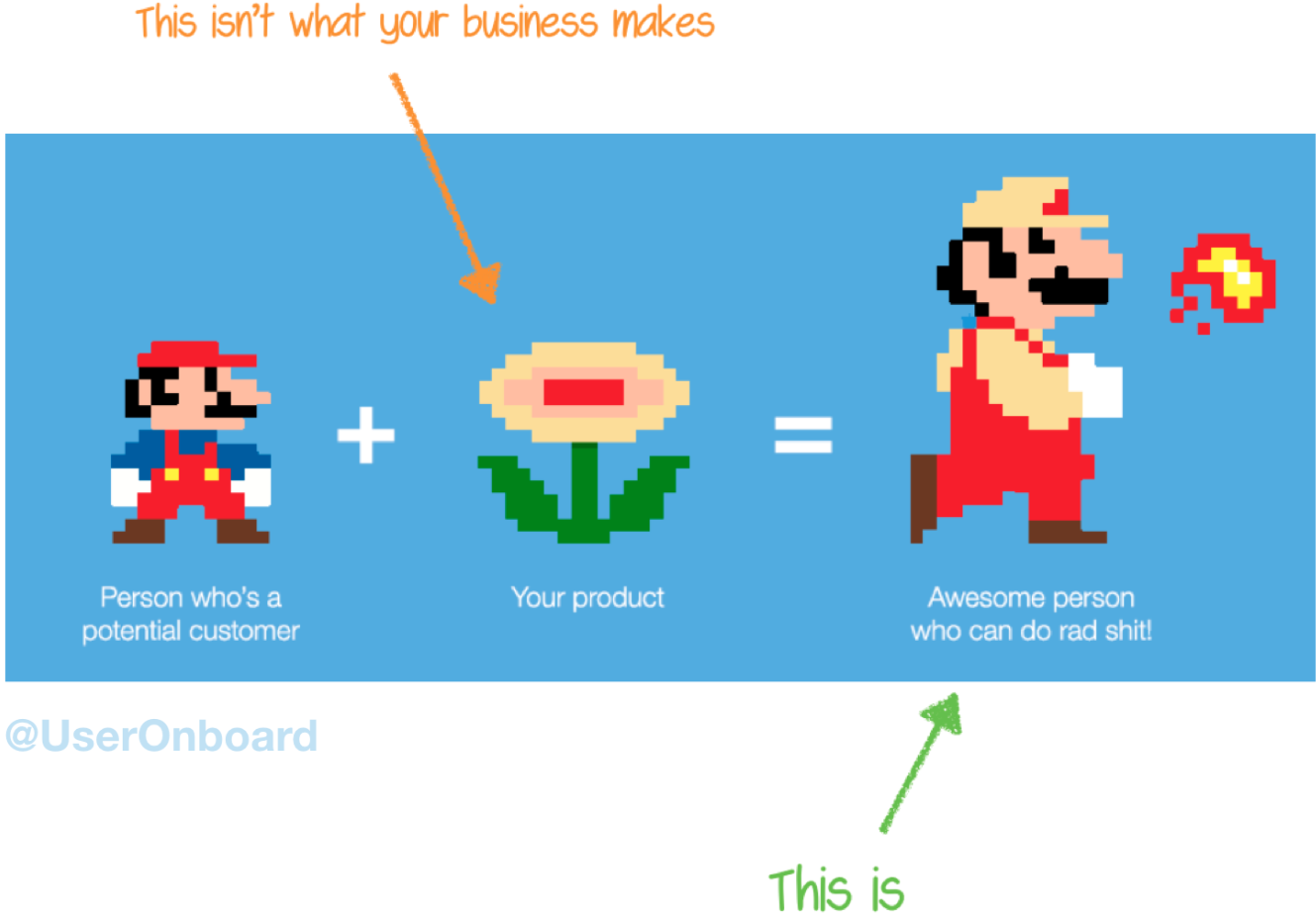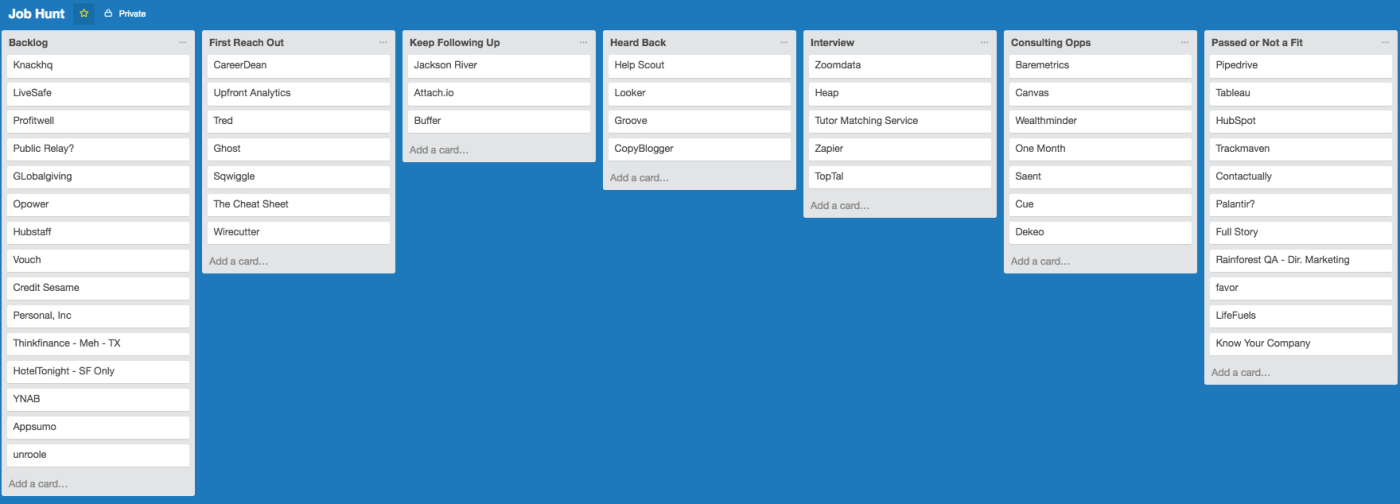As a data engineer and analyst, I search for the best use of my time and resources by testing techniques and measuring results. That often means applying a technique from one function of a business to another—say, applying the lean product development cycle, "build-measure-learn", to your marketing efforts.
You can also use this method to search for a new job and sell yourself into a position you want. Here’s how I went about "growth hacking" my job search. When selling, you must identify your target market and learn how to appeal to them before trying to make the sale. Instead of waiting for recruiters or surfing job boards, I got proactive and took a page out of the sales playbook for some outbound job hunting.
As we come up on the holidays, many companies are defining budgets and roles for the following year. That makes this technique especially effective right now, but it works any time of year!
Step 1: Identify Your Prospects—Target Your Dream Companies
The most important step of this process is figuring out the company values, the type of products, and the roles that interest you. I value corporate transparency, remote-first mentality, commitment to building a team and company for the long term, and products that make people more efficient. That’s helped me build a list of a about a dozen companies that I would consider my dream company list.
The best way that I found to build my own list was to aggregate the lists that others make!
Early in your career and want a kickstart? Try Wealthfront’s career launching companies list.
Looking for remote companies? Zapier’s got a list of 100% remote companies.
How about transparency? Baremetrics’ open startups list is a good start.
Want a commitment to diversity? Consider the companies run by top female founders.
Leverage work that others have already done around your passion points!
Decide what’s important to you. Then, write it all down use your values to decide where to apply, and then forget about it. Why? Well, to land your dream job, it doesn't matter what you want but what the company needs. So you need to pitch the company that you're perfect for them, not that they're perfect for you. The next steps are about selling yourself for the job–even if it's not an open role at the company or one that's ever been created.
Step 2: Create the Pitch: What Do I Have to Offer?
A customer isn’t buying a product to do the company a favor. Similarly, a company won’t hire me because they’re the ideal fit for my career goals. It’s up to me to convince the company of what they will be able to achieve with me as part of the team. How can I make the organization better off?
This is one of my favorite sales memes, and it’s completely applicable in the job search, too. It’s not about what I can do, but how the team will be better off with me on it.

When you’re applying for an existing position or reaching out cold to a company, frame your inquiry in terms of what you can do for the organization. How, exactly, are you planning on improving the company's bottom line?
And be careful! It’s easy to slip into describing only why you want the job, not why the company will benefit from having you on the team. The steps below will help you perfect your pitch.
Step 3: Run an Outbound Sales Process
So I know where I want to work and how to show how valuable I am to the company - what’s next?
Identify the appropriate recipients (don’t be afraid to aim high)
Start on LinkedIn. For the jobs that I want, who will be my manager? And who’s one step up from that? These are the folks I want to contact. When I don’t know how the company is structured, I can usually get a good idea from the job titles people use on Linkedin. Sometimes I can target the C-suite directly, but sometimes I have better luck with folks who don’t have an assistant filtering their emails!
Ok, but if their email isn’t listed on LinkedIn, how do I actually contact them? Luckily for us, salespeople have already conquered this challenge. Most companies have standard email patterns (e.g., firstname.lastname@companyname.com) and tools like ClearBit take advantage of that—along with some proprietary secret sauce—to find email addresses. I’ve had a 90%+ success rate when searching for someone’s email address with tools like this.
Related: Find any email address in minutes with these 12 apps and tips
Draft an email that describes how you will help the company and why you’re a good fit
For example, here’s the email that I used to write to the CEO at one of my dream companies.
Note the structure here: There are some key components that should appear in the email:
A couple of sentences about what I admire about his company - this hopefully makes them feel good, while also introducing me.
A sentence or 3 about what I’m looking for.
How I could make their life easier. I’m guessing that all of the projects that I listed are essentially on this person's plate. I focused here on trying to illustrate how adding me to the team would ease some of his burden.
My email is legitimately personalized, which makes it different from the typical sales email. Unlike sales, which often has an essentially unlimited number of prospective customers, there are only a few organizations that I’d consider a "dream company." Don’t skimp by using a form cover letter and just plugging in the company’s name. If you’re applying to your dream companies, take the time and effort to research each one and speak to their unique qualities and challenges.
Use trackable email tech to measure and learn what types of emails are working
Salespeople and growth marketers are well-versed in email tracking, so let’s apply some of that technology. I use Yesware here, but there are plenty of tools in the space.

At a very granular level, a tool like Yesware can tell you when a prospect has opened my email. This does a few things:
I know that the email address worked.
I can see which subject lines are working: Is one getting more traction/opens than others?
If they open it more than once, I can typically assume that they really did read it, as opposed to "open and delete." That’s helpful when writing a followup message.
If there are 10+ opens for a single email, I can often assume that they forwarded it somewhere else on the team—that’s usually a good sign!
Keep track of what companies are in what stage of the job acquisition funnel
After I get into the swing of things, it can be tough to remember who you’re supposed to email when. I use Trello cards to keep myself organized. Every few days when I’ve blocked time to send out follow up emails, I can revisit this list to remind myself who needs another prod.

Added bonus: This snapshot is actually a combination of my last job hunt (2 years ago) and my current one. It worked as a really excellent reminder to reconnect with companies that might not have been a fit back then, but might be interested now!
Step 4: Don’t give up
Most of the time, you won’t hear back. For me, at Zapier, I went through interview processes for at least 3 different roles before we found the right mutual fit. That’s not to mention the processes, trial projects, and cold pitches that I had going elsewhere at the same time.
Plus, I didn’t include a similar email that I sent Wade in 2015 (!) before I found my last job.
Job hunting can be a slog, but the payoff from finding your dream job is worth it.
Step 0: Be really good at what you do. None of this matters if you can’t pass the skills tests
It’s great to have a system and a process for getting yourself noticed, but the best process in the world doesn’t matter if you’re not good at the job. I make sure that I can send testimonials (or LinkedIn Recommendations, case studies, and content that show I can follow through to prove myself).
Use sites like Glassdoor to understand what the interview process might look like and what type of skills are important to succeed at the job. The best interviewer in the world still needs to succeed on the job if they want to have a great career!
Good luck looking for your next dream job—if this process helps you out, we’d love to hear from you in the comments! And, by the way, Zapier is hiring.
Keep Reading:






